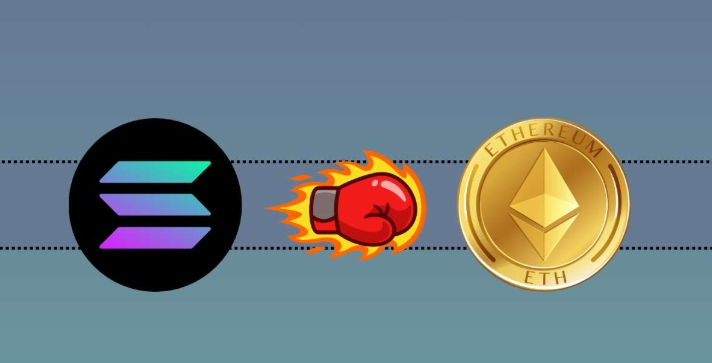以太黄昏:帝国裂缝已现,ETH穷途末路?
曾几何时, $ETH 是加密货币世界无可争议的皇冠明珠,是“世界计算机”的宏伟蓝图,是去中心化金融(DeFi)和NFT革命的摇篮。
然而,盛宴之下,危机四伏。
当我们拨开市值的迷雾与社区的光环,一个残酷的现实正逐渐清晰:以太坊这座看似坚固的大厦,已然裂缝遍布,正悄然走向穷途末路。

一、 技术理想国的陷落:从“世界计算机”到“贵族链”
以太坊的初心是成为一台无需许可、全民可用的全球计算机。但如今,这台“计算机”的运行成本高昂得令人咋舌。
在牛市高峰期,一笔简单的转账手续费可能高达数十甚至上百美元,一个复杂的DeFi交互则需耗费数百美元。
这彻底背离了普惠的Web3愿景,将绝大多数普通用户拒之门外,使其沦为巨鲸和机构玩家的“贵族游乐场”。
尽管“合并”成功转向权益证明(PoS)是巨大的工程成就,但它并未解决核心的可扩展性问题。Layer 2解决方案(如Arbitrum、Optimism)虽是对症下药,却反过来印证了以太坊主网的失败——它自己无法承载大规模应用,必须依靠“外挂”来续命。这形成了一个尴尬的悖论:以太坊的终极价值,正从主网本身转移到其附庸的Layer 2之上。 当生态的活力与价值更多地沉淀在二层时,主网的“共识圣杯”地位还能维持多久?

二、 竞争者环伺:群狼撕咬下的帝国黄昏
以太坊的迟缓,给了后来者弯道超车的绝佳机会。
Solana: 以其惊人的交易速度和低廉的费用,高举“高性能”大旗,尽管历经多次宕机,但其“修复即重启”的韧性吸引了大量追求极致体验的开发者和用户。尤其是在消费级应用和高频交易场景,Solana已然形成了强大的生态壁垒。
Avalanche、BNB Chain等: 它们以更高的兼容性和更低的门槛,不断蚕食着以太坊的开发者资源和用户基础。对于许多新项目而言,与其在拥堵且昂贵的以太坊上艰难起步,不如选择这些“更友好”的公链。
新兴模块化区块链与Layer2生态: 像Celestia这样的模块化范式,以及Base、Blast等由大型交易所或资本支持的Layer2,其发展势头甚至超越了以太坊主网。它们正在构建自己的生态系统和叙事,未来可能不再甘于只做以太坊的“附庸”。
战场已经从“一超多强”变成了“群雄逐鹿”。以太坊的先发优势正在被技术迭代和用户体验的差距迅速抹平。

三、 监管的达摩克利斯之剑
转向PoS后,以太坊的监管风险骤然升高。
由于质押节点相对集中(例如通过Lido等流动性质押服务),美国SEC一直虎视眈眈,试图将以太坊归类为“证券”。
一旦被贴上证券的标签,将意味着无尽的合规枷锁和传统金融世界的严格监管,这对其去中心化理想和全球自由流动的属性将是致命一击。

四、 创新僵化与社区分裂
庞大的体量和历史包袱使得以太坊的核心开发变得异常缓慢和保守。
任何一次重大升级都需要经历漫长的讨论、测试和争论,这与新兴公链的快速迭代形成了鲜明对比。
此外,社区内部关于货币政策、发展路线图的争论也从未停止,潜在的分裂风险如同暗流,时刻侵蚀着共识的基石。

结语:穷途末路,还是涅槃重生?
断言以太坊会“突然死亡”无疑是愚蠢的。它依然拥有最庞大的开发者社区、最深厚的资金沉淀和最强大的品牌信誉。
然而,“穷途末路”指的并非即时崩盘,而是一种范式上的衰落。 它意味着以太坊作为唯一主导性平台的时代已经结束。
未来的区块链世界,更可能是一个多链并存、百花齐放的格局。以太坊或许会像当年的IBM一样,依然伟大,但不再唯一。
它可能退守成为高价值资产结算的“结算层”,而将广阔的应用创新空间让渡给更具活力的新公链。
黄昏已至,帝国的夕阳依旧壮丽,但夜幕之下,新的星群正在以前所未有的速度点亮星空。

23.47K
15
The content on this page is provided by third parties. Unless otherwise stated, OKX is not the author of the cited article(s) and does not claim any copyright in the materials. The content is provided for informational purposes only and does not represent the views of OKX. It is not intended to be an endorsement of any kind and should not be considered investment advice or a solicitation to buy or sell digital assets. To the extent generative AI is utilized to provide summaries or other information, such AI generated content may be inaccurate or inconsistent. Please read the linked article for more details and information. OKX is not responsible for content hosted on third party sites. Digital asset holdings, including stablecoins and NFTs, involve a high degree of risk and can fluctuate greatly. You should carefully consider whether trading or holding digital assets is suitable for you in light of your financial condition.

